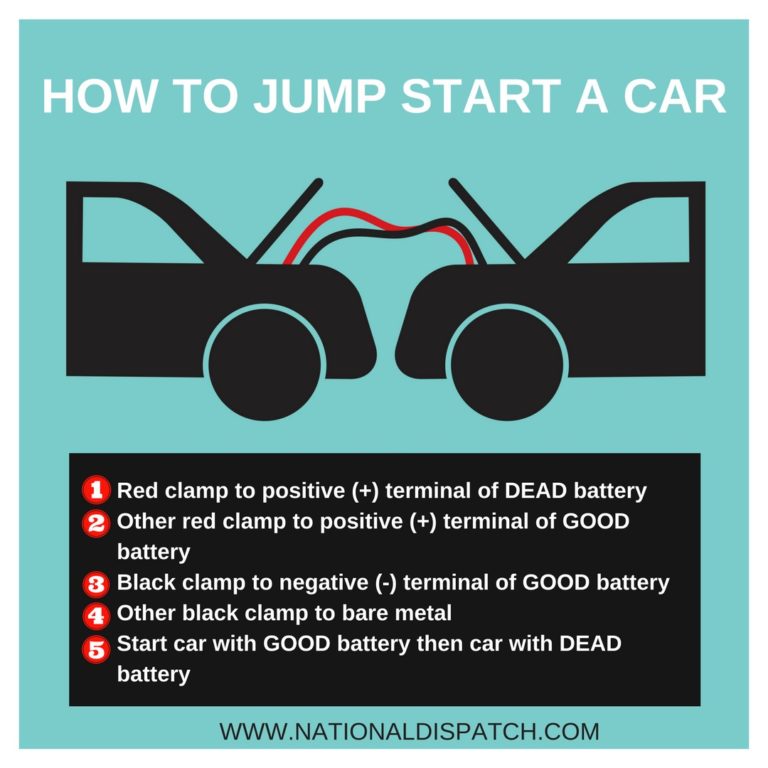image source: https://www.nationaldispatch.com
Welcome to our guide on how to jump start a car! Whether you’re a new driver or just need a refresher, knowing how to jump start a car is an essential skill to have. After all, no one wants to be stranded with a dead battery and no way to get their car running again. In this article, we’ll walk you through the step-by-step process of jump starting a car safely and efficiently. So, let’s get started and learn how to get your car back on the road in no time.
Learn the Easy Way to Jump Start a Car: A Comprehensive Guide
Jump starting a car may seem like a daunting task, but with the right knowledge and equipment, it can be a quick and easy process. Whether you find yourself with a dead battery in a parking lot or on the side of the road, follow these simple steps to safely jump start your car and get back on the road.
Step 1: Gather the Necessary Equipment
Before attempting to jump start a car, it is important to have the proper equipment on hand. You will need:
-A set of jumper cables
-A functioning vehicle with a fully charged battery
-A safe and flat area to park both vehicles
-A pair of safety glasses (optional but recommended)
Step 2: Position the Vehicles
Park the functioning vehicle close enough to the dead vehicle so that the jumper cables can reach both batteries. Make sure both vehicles are in park or neutral with the engines turned off.
Step 3: Prepare the Batteries
Open the hood of both vehicles and locate the batteries. Identify the positive (+) and negative (-) terminals on each battery. It is important to note that the positive terminal is typically red and the negative terminal is usually black.
Step 4: Connect the Jumper Cables
Take the red jumper cable and connect one end to the positive terminal of the dead battery. Then, connect the other end to the positive terminal of the functioning battery.
Next, take the black jumper cable and connect one end to the negative terminal of the functioning battery. Finally, attach the other end of the black cable to an unpainted metal surface on the dead vehicle, such as a bolt or bracket. This will help prevent any potential sparks near the battery.
Step 5: Start the Vehicles
Start the functioning vehicle and let it run for a few minutes. This will allow the battery to transfer a charge to the dead battery.
Try starting the dead vehicle. If it doesn’t start, let the functioning vehicle run for a few more minutes before trying again.
Step 6: Disconnect the Jumper Cables
Once the dead vehicle is running, carefully disconnect the jumper cables in the reverse order that they were connected. Start with the black cable from the unpainted metal surface, then the black cable from the functioning battery, the red cable from the functioning battery, and finally the red cable from the dead battery.
Step 7: Let the Dead Vehicle Run
Allow the dead vehicle to run for at least 15 minutes to ensure the battery has enough charge to stay running. If the vehicle does not start after this time, it may be an indication of a larger issue with the battery or alternator.
Step 8: Replace or Recharge the Battery
If the dead battery was the cause of the issue, it may need to be replaced or recharged. Consult your owner’s manual or a mechanic for guidance on which option is best for your specific vehicle.
In conclusion, jump starting a car is a simple process that can save you time, money, and hassle. Remember to always follow safety precautions and consult a professional if you are unsure of how to properly jump start your vehicle. With the right equipment and knowledge, you’ll be back on the road in no time.In conclusion, knowing how to jump start a car is an essential skill for any driver. By following the proper steps and taking necessary precautions, you can safely and effectively jump start a car in case of a dead battery. Remember to always have a set of jumper cables and a working vehicle nearby in case of emergencies. With this knowledge, you can confidently handle unexpected situations and get back on the road in no time. Keep this guide handy and share it with others to spread awareness of this important skill.
